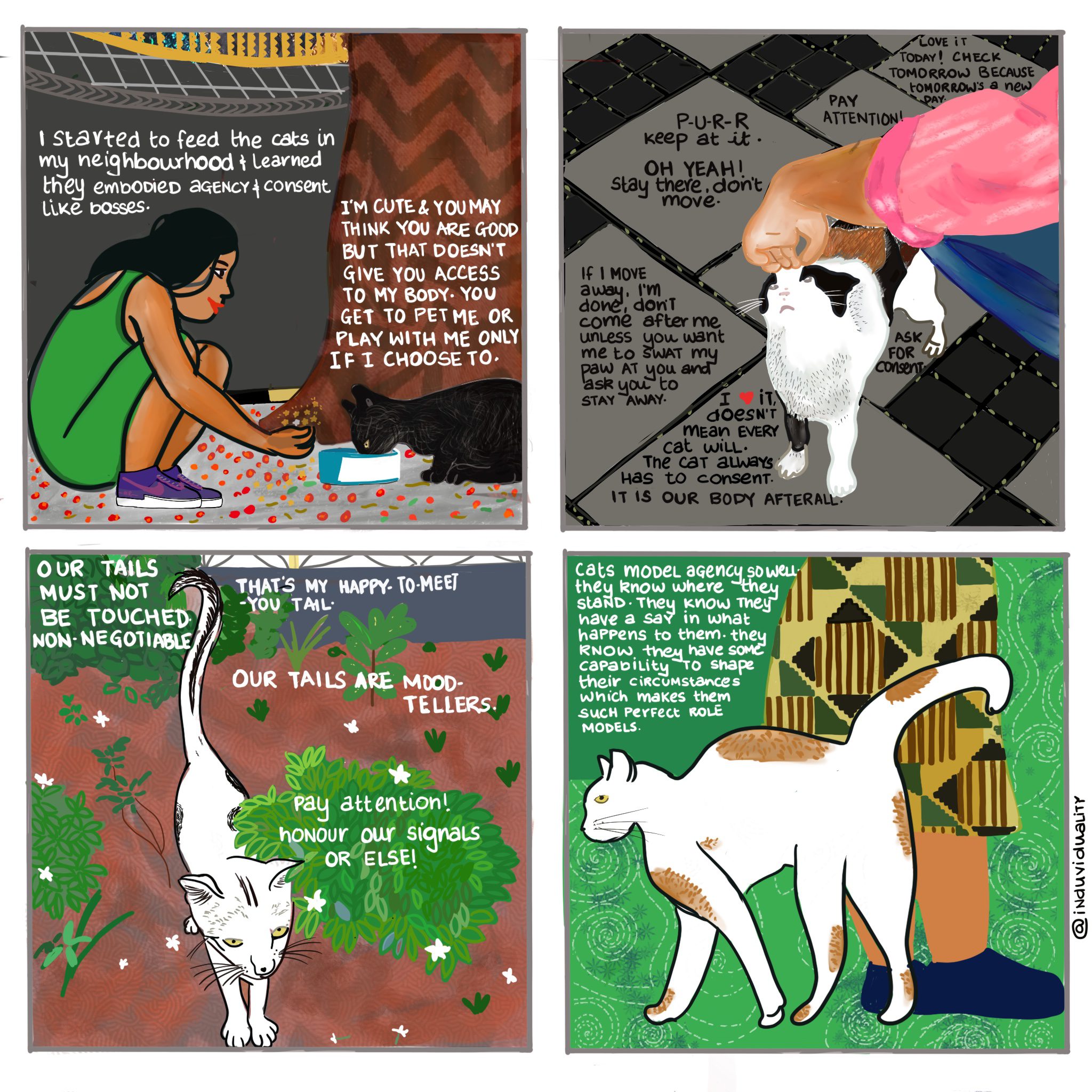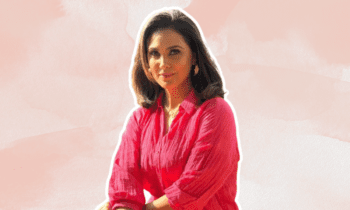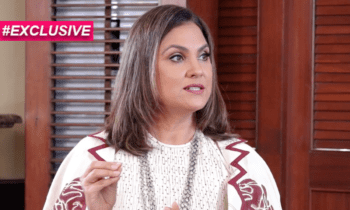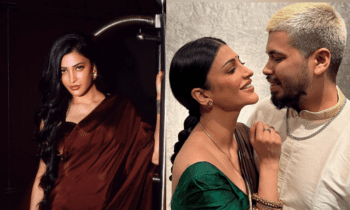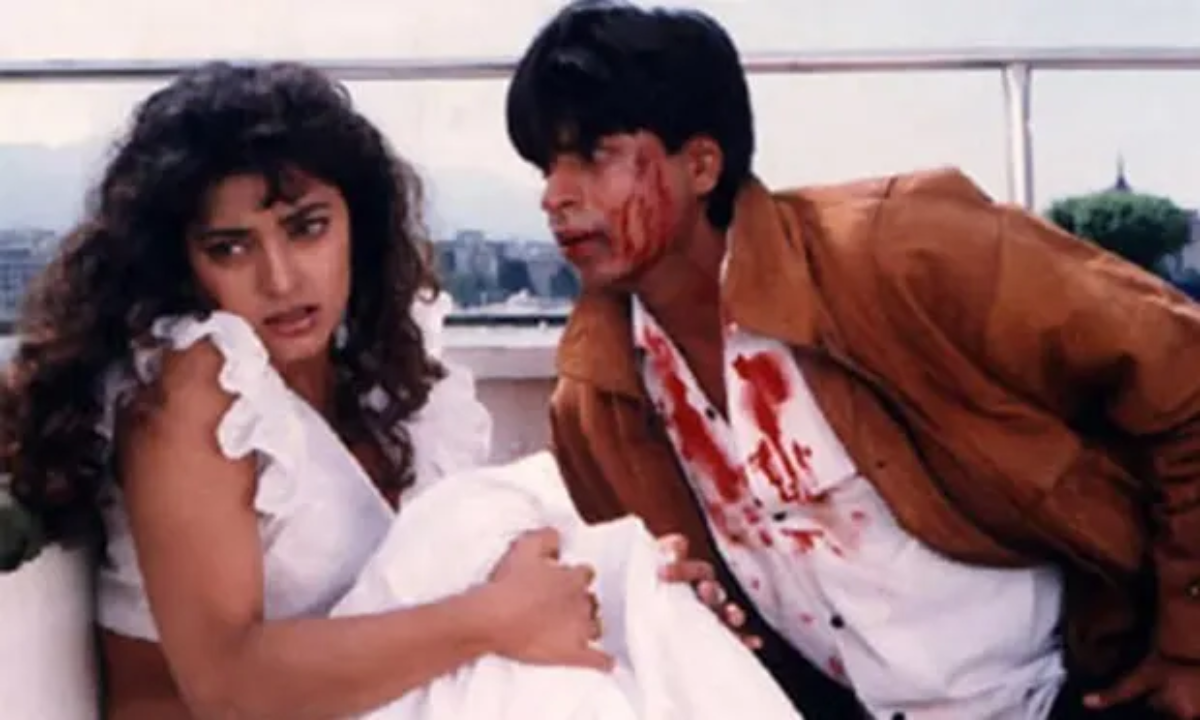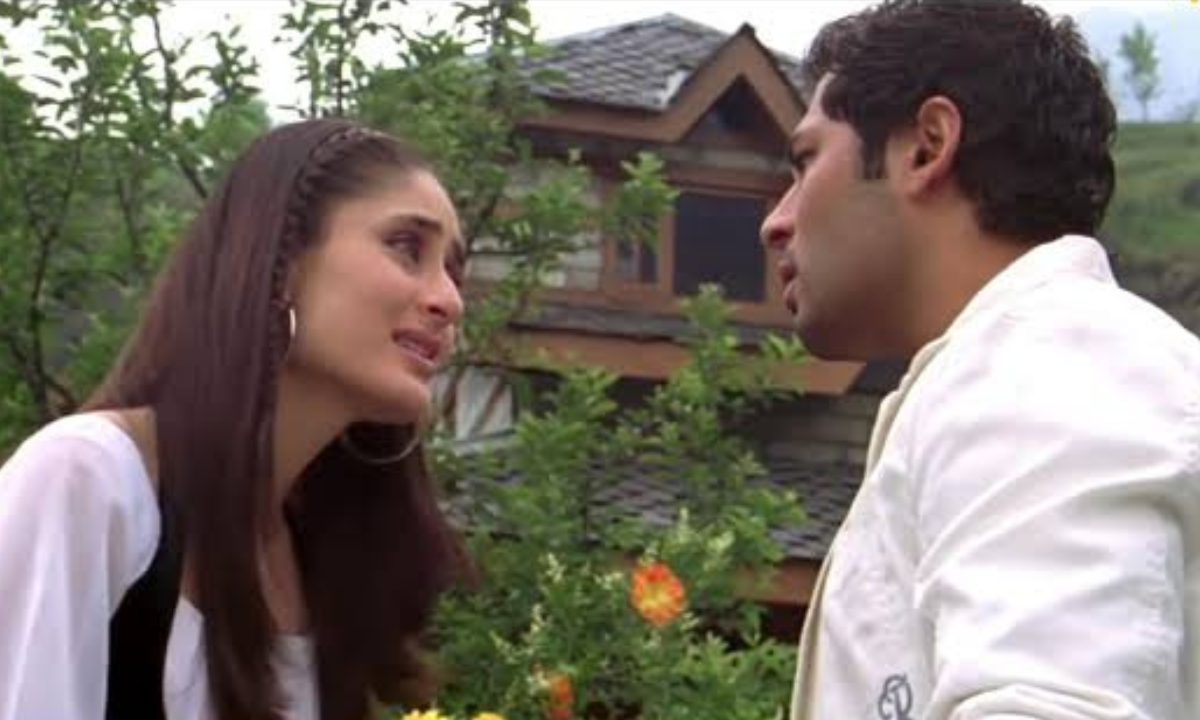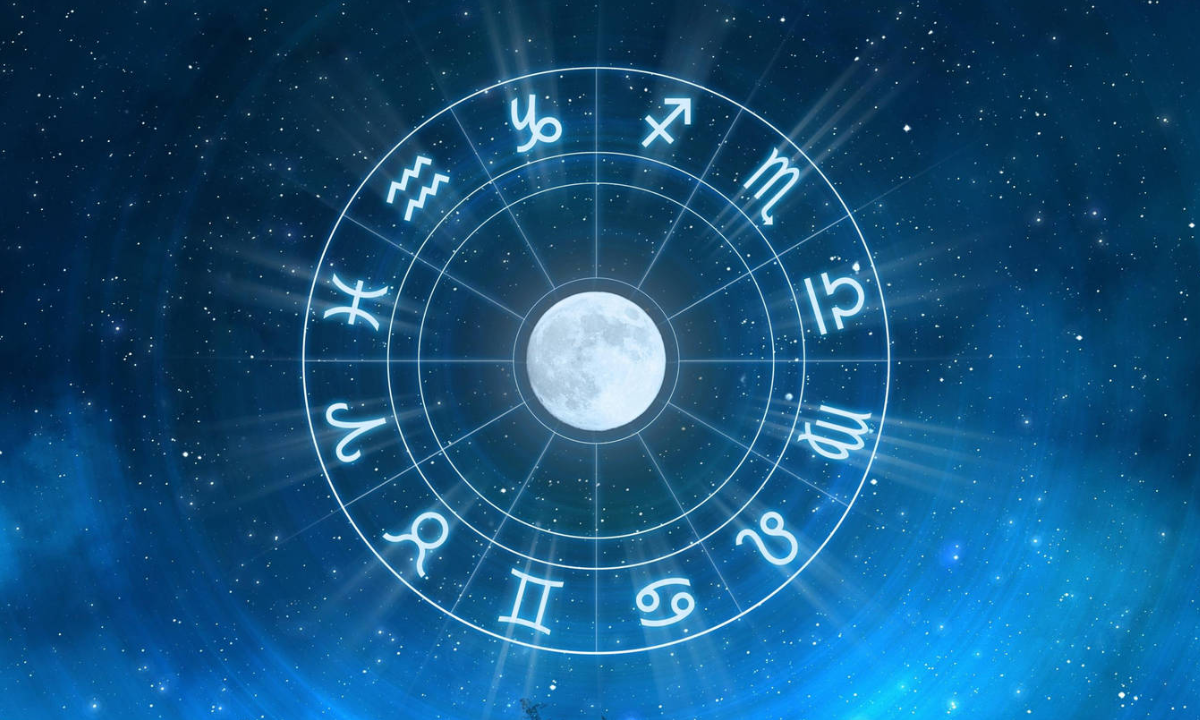Exclusive: Artist Indu Harikumar Talks About Understanding Consent In Modern Dating Through Her Body And Sex Positive Art Series
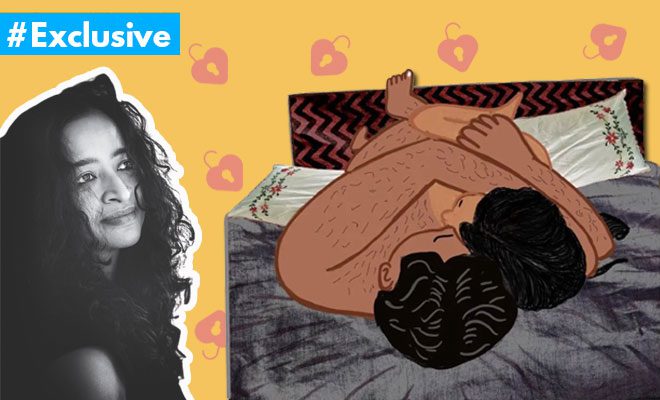
There’s a scene in Sex Education Season 3, where Emma Mackey as Maeve and George Robinson as Isaac get together. Now Isaac is a person with disability, and has no sensation in his body from the waist down. Naturally, Maeve has questions about what all he can experience in terms of physical sensations and arousal during sex, where she should touch him, and so on. The scene is perhaps one of the few that realistically and respectfully handle intimacy involving a person with disabilities. But what really moved me was how consent was so importantly woven into its writing. Not just Maeve, but Isaac too asked for consent at every step, because both of them were getting intimate for the first time.
With modern dating evolving so fast, there’s also a growing emphasis on understanding certain key concepts that ensure this experience is safe and enjoyable for everyone. Consent is definitely one of them. When we think of consent, our thoughts instantly go to sex. Weird, isn’t it, that we are conditioned to think it only matters when you’re having sex, but not when you’re casually touching a coworker’s arm in jest, or hugging your 5-year-old nephew while he squirms to escape because he doesn’t like it. Consent is also a concept that has been tricky to navigate, even legally, as we have seen varying judgements in different court cases which suggest that it is still an area that deserves proper study, discourse and understanding.
Luckily these conversations are being encouraged by several mediums, from dating apps to relationship counsellors and even influencers on social media who put out explainers. But artist and storyteller Indu Harikumar has a rather interesting way of talking about consent—she does it through her bold, body positive and sex positive artwork on her Instagram profile @induviduality ! Harikumar has, for quite a few years now, used her art to tackle a variety of themes around modern dating, gender identity, body image, sex, consent and more. Her art series—such as #100IndianTinderTales or #Identitty or #NotesToMyLovers—are bold, and often accompanied by stories, some of which are from her own experiences, and a lot of them are crowd sourced, or as she likes to call them ‘people-powered’. And truly, they strive to empower the people who power it.
View this post on Instagram
In conversation with us, Indu Harikumar talks about how she embarked on this purpose with her art and the kind of stories that moved her, and helped broaden her own understanding of herself, her emotions and her body. But more importantly, she talks to us about consent, a theme that recurs frequently and is the central theme of her recent series, and the different interpretations, myths and misconceptions around it.
Q: What prompted you to creating artwork that talk so openly about topics like gender, sex, consent, body positivity and modern dating?
Indu Harikumar: I started #100IndianTinderTales, a people-powered project because I wanted to know about other people’s experiences, their success, their failures, what was working, what wasn’t working especially in the Indian context. I didn’t expect people to open up or share because there was no reason for people to be vulnerable with a stranger, but the project went viral. I had asked people online to share their experiences on Tinder, I’d illustrate them and upload.
View this post on Instagram
When I wrapped up #100IndianTinderTales, I was left with many stories and people wanted me to continue. The experience gave me a vocabulary and taught me several things about bodies, power, dating, communication and the interplay of all of these when people set out to connect with other folks. It led me on a journey of self discovery about my own body, my gender performativity, how power plays out in my own relationships and I roped in the community so we could learn from each other’s experiences.
If there is a thread that’s binding all of us, it is that we all want acceptance, we are all looking for validation, love and respect, and sometimes sharing stories with me brings that to people, I assume. It is a way to feel seen, heard and turned into art. My collaboration with Tinder India on #LetsTalkConsent is about people’s experiences, capturing unique manifestations of seeking, giving, receiving consent in intimate relationships.
For me it is not just inspiration but the connection and community, and is there any bigger form of validation than trust? The trust and support from people who consume my work has helped me continue.
Q: What’s your process of creating your art?
A: My art process usually starts with a lot of chaos, and in the chaos, there are ideas that stand out that I try working around. I do want my art to be accessible and am currently drawing digitally but I like to challenge myself from time to time and work with found objects, paper, leaves and place restrictions. For this particular series, I used four panel comics to tell the story which is a fairly new thing for me.
Q: Your work is bold and unapologetic, and definitely sex and body positive. Do you face issues with censorship on social media?
A: When I do a new series, I try to work on some illustrations without bare body parts and stick to NO nipples because the traditional press, whether Indian or international, is quite conservative. I have gone through a lot of self-censoring because I used to work on children’s content primarily so when I did #100IndianTinderTales, I was cautious because I didn’t want to throw people off. I also wanted to make sure that I could continue to do the work I did previously, something I had put in hard work to build.
My initial drawings in the #100IndianTinderTales’ series was about folks kissing and slowly, I started to draw some nudes and them in action. Now that I have a series on breasts which was well received, I don’t self-censor as much. The community that consumes my art helps a lot.
View this post on Instagram
Q: Of all your ‘people-powered series’, which one has been the most daunting one for you to create and why? Any particular story that moved you profoundly?
A: All of them have made me feel intimidated and scared while in the process, but looking back, I think ‘Identitty’, which was about desexualising breasts and their singular objectification in visual representations across media, was quite daunting. I had personal pictures of so many folks, that kind of responsibility made me very anxious. It was also so interesting because people discussed their relationship with their breasts through a gamut of emotions of love, hate, anger, desire, agony and ecstasy.
View this post on Instagram
#100IndianTinderTales had its own challenges, had anyone told me it would put me on this journey of self-discovery, I would rather hide. Working with several contributors and the press was something. One of my favourite stories is from #100IndianTindertales, two folks met on the comment section of a story and got married and I was the guest of honour at their wedding!
Q: Let’s talk consent. What does consent mean to you? And has the understanding evolved for you since you started the series?
A: Definitely, I almost believed that my body belonged to my partner and now I am able to have several conversations around my reservations, my safety, what feels respectable and my pleasure is important. I am still learning about consent because it means letting go of so much conditioning.
A major breakthrough for me was when one of my dates mentioned how we must talk about how we communicate. I thought it was a buzzkill but stuck with it. It meant we set some solid ground rules and chalked out a plan on how to respond and how much to respond when either of us messaged. This took care of many things like late responses, ghosting, or limited replies that usually leave people dazed and confused in a relationship. It also meant that during, before and after sex, we had the space to have conversations, which sometimes can feel awkward. It paved the way for a safe space and I felt seen and heard.
We need a culture of consent where we can flourish as joyful, pleasure-seeking beings that we are. Tinder’s Consent campaign solves exactly that – creates a space for people to explore and nurture new connections. With the resource center, there is help available from credible resources for everyone to navigate through the tricky terrains of consent by understanding its legal and interpersonal nuances. It creates a safe space for people to educate themselves with credible resources and engage in conversations on the meaning of consent. And that is exactly what is required, a discourse involving very practical questions that young people have.
Also Read: Women Talk About Things They Wish They Knew About Consent
Q: How does one go about asking for consent and how often should it be asked?
A: Like someone who wrote to me said, “Consent is not a side dish, it is the main course,” and it means getting permission for any intimate activity, or any other physical activity for that matter. Although consent can be given both verbally and non verbally, it’s a good idea to try to get verbal consent before initiating physical touch—a simple, “Is this okay?” before proceeding. And remember to do so throughout your encounter, at every step. If you’re in a relationship beyond a short encounter, check in with your partner regularly to see if they’re comfortable and feeling good.
Sometimes consent is expressed with words, other times with actions. So verbal consent can include saying “yes,” “don’t stop” or telling a partner what you want, while non-verbal consent can include nodding, pulling someone closer, or active engagement, such as mutual touching. Nonverbal cues tend to be less clear when you’re with a new partner, so it’s always best to use verbal consent until you know someone well. Once at that stage, understanding body language goes a long way for non verbal cues.
The bottom line is, if you meet someone online or in person, you have a responsibility to respect their boundaries, and they must respect yours. If you aren’t absolutely sure what they’re comfortable with, just ask.
View this post on Instagram
Q: In the course of your work, have you come across differences in how different genders ask for, and understand, consent?
A: 50% of the modern dating couples surveyed in an Instagram poll on Tinder India’s channel have revealed that they felt awkward while asking for consent from their partners.
The biggest hurdle to talking about or asking for consent is our patriarchal set up and social conditioning which rarely respects personal space and has conditioned us to do things we are not comfortable doing. Even for something as simple and mundane as eating karela (bitter gourd), we must just play along in agreement. If I don’t fancy eating karela in my meal, I have to eat it and make sure to appreciate the person who made it. The question as to whether I really enjoy it as part of my diet is never reflected upon, even if I want to. While eating karela may not hinder your safety, when this same attitude is followed into a dating or relationship, it can become highly uncomfortable and could even jeopardize your security.
Also Read: From Consent To Contraception, This Girl Talks To Her Grandmother About All Things Sex In This Video
Q: Pretty sure there’s a lot of learning from the responses you get as well. What has been the most common misconception about consent that you’ve come across in your Indian audience?
A: There are quite a few, to be very honest. Right from deciding if your date was giving all the right “signs”, to thinking consent is a one-time thing that once given, is applicable for all and every successive act/encounter. Of course there is such a thing as non-verbal consent, as I said before, but I think the key thing to keep in mind is it must be enthusiastic consent and not open to interpretation. Initiating physical contact or nodding to signify “yes” are clearer non-verbal cues of consent. But something like smiling or eye contact most definitely isn’t! In fact, the best thing to do, if there’s even a tiny bit of confusion, is to ask verbally. We are all different people, we have different body languages. It is not fair to impose your assumptions of what entails consenting “signs” onto your partner.
Plus, even when consent is given, many people seem to believe it means gaining a lifetime free pass to a person’s body. That is certainly not the case. Rather, it should be perfectly normal to regularly check-in with your partner with respect to their comfort, within a sexual encounter while escalating to different activities, or in the general course of having a physical relationship with another person is a healthy practice.
I think one pervasive misconception around consent is also that it’s a “sex thing”. In actuality, any sort of physical contact, even if it is hugging, should be done only if the other person consents to it enthusiastically. Think about it—even if we interact with anyone else in life, say, we need to borrow a pen, we don’t just steal it from someone’s pocket. We ask for permission because we want to be respectful- and if we can be respectful of a stranger’s ownership of a pen, it’s only logical that we remain a lot more respectful of those we care about when it comes to their bodies, agency and personal space.
Also Read: This Mother Makes Her Family Seek Consent From 2 Year Old Daughter Before Touching Her
Q: What we watch has always impacted our own understanding of sex, intimacy, consent and gender. What do you think of the entertainment industry’s evolution in the understanding of these concepts?
A: There has been some evolution, I suppose, but there are still enough films and series out there that have no qualms in glossing over the necessity of gaining consent. When the song from the Shah Rukh Khan and Aishwarya Rai starrer film Josh croons – “Yeh uska style honga, hoton pe naa dil pe haan hoyenga,” we know there is no room for consent. Another song that puts women at the losing end of the consent bargain is from the Sunny Deol’s Ghayal which goes like “Pyaar tum mujhse karti ho, don’t say no, marti ho mujhpe marti ho, don’t say no”. Even a cult classic like DDLJ shows a series of highly problematic and non-consensual breaches of physical space by Raj. For instance, when he decides it’s a perfectly normal thing to lay on someone’s lap without asking for their consent.
These are still relatively earlier generation films, but even today, consider songs like “Gandi Baat” from R…Rajkumar, or film narratives like Kabir Singh and Ranjhanaa that go as far as to eulogize stalking in modern times and reek of misogyny. We still have item numbers that sexualize women. What are we telling people who consume the content where a Kabir Singh threatens a woman for not agreeing to be intimate with him?
Also Read: Throwback Thursday: 90s Bollywood Songs Were All About Ignoring Consent And Convincing Her To Say Yes
Q: How has your own work impacted you since the time you started creating these artworks, to now? And what do you hope it does for others?
A: I came from a place where I believed my body belonged to my partner, so from then to now, it’s been quite a journey. My work and series of projects have helped me not only enrich my own understanding of my body and my identity, it has also helped me make meaningful connections with so many people, who each have their own stories to tell. By giving them a platform to tell their stories, voicing their experiences and encounters, I have learnt so much, as I’m sure many other people have. The only way to counter the dominant misconceptions and misplaced ideas around consent is to cultivate a space for conversation and awareness.
Through my art, I hope to do my bit, shed my own misconceptions and help people understand and engage with the idea of consent in an entertaining, yet thoughtful manner.





